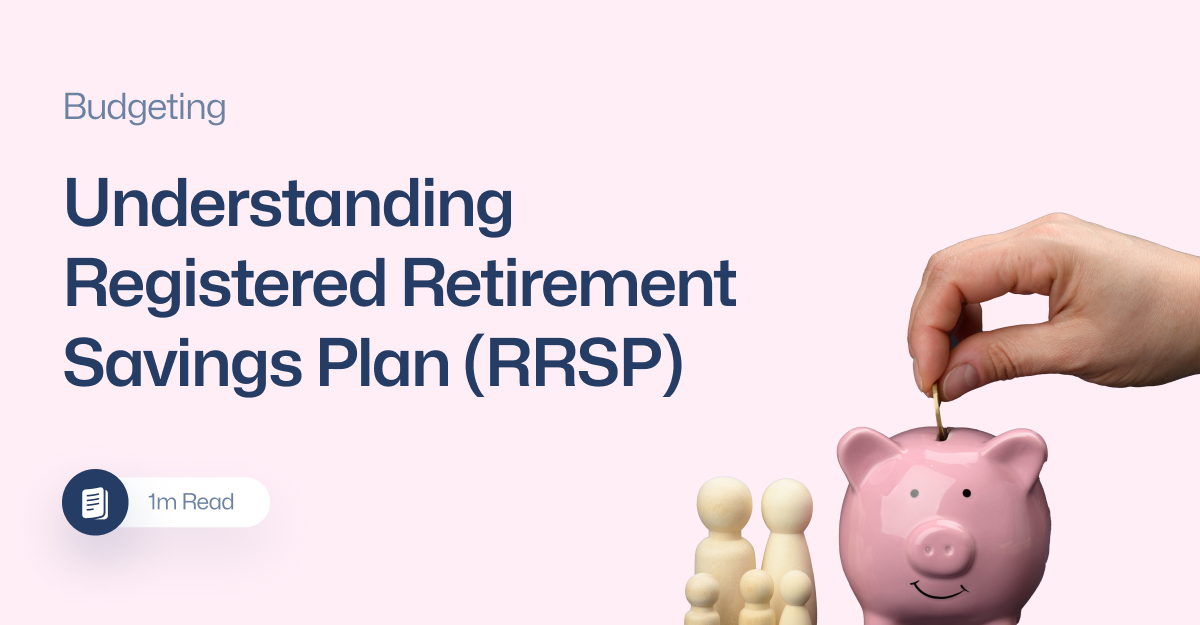Understanding Registered Retirement Savings Plan (RRSP)

Planning for retirement is a crucial part of financial stability, and in Canada, one of the most effective ways to save for your future is through a Registered Retirement Savings Plan (RRSP). Whether starting a career or already approaching retirement, understanding how an RRSP works can help you maximize your savings and enjoy tax benefits along the way. In this article, we will break down the basics of RRSPs, their benefits, and how you can take advantage of this retirement savings tool.
What is an RRSP?
An RRSP is a retirement savings account registered with the Canadian government, designed to encourage individuals to save for retirement. The key advantage of an RRSP is that the money you contribute is tax-deferred, meaning you won't pay taxes on the funds until you withdraw them. The government offers this tax incentive to encourage Canadians to save for their retirement, ensuring financial security in later years.
How Does an RRSP Work?
Here’s a step-by-step breakdown of how an RRSP works:
Contributions:
You can contribute up to 18% of your earned income from the previous year, up to a maximum limit set by the Canadian government. In 2023, the maximum contribution limit was $31,560. If you haven’t maxed out your contribution room in previous years, you can carry forward the unused contribution space to future years.
Tax Savings:
Contributions to an RRSP are tax-deductible. For example, if you earned $80,000 in a year and contributed $10,000 to your RRSP, your taxable income for that year would be reduced to $70,000, potentially saving you a significant amount in taxes.
Investment Growth:
RRSPs allow you to invest your savings in a wide range of financial products like stocks, bonds, mutual funds, and GICs (Guaranteed Investment Certificates). The best part is that any growth on these investments is not taxed as long as the money stays within the RRSP.
Tax Deferral:
You only pay taxes on the money when you withdraw it, ideally during retirement when your income is lower, which usually results in paying less tax than if you had been taxed on that income earlier in life.
Types of RRSP Accounts
There are different types of RRSPs that cater to individual needs:
1. Individual RRSP:
This is the most common type of RRSP, where you set up and contribute to your own account.
2. Spousal RRSP:
This allows one spouse to contribute to the RRSP of the other, which can help reduce the couple's overall tax burden by shifting income to the lower-earning spouse.
3. Group RRSP:
Offered by some employers, a Group RRSP allows employees to contribute through payroll deductions, sometimes with employer matching contributions, making it a convenient way to save.
Why Should You Contribute to an RRSP?
Contributing to an RRSP has several long-term financial benefits:
Tax Reduction:
Contributions to your RRSP reduce your taxable income, helping you pay less in taxes during high-earning years.
Growth Without Immediate Taxes:
All investment income earned in the RRSP grows tax-free, allowing your investments to compound over time, which significantly boosts your savings.
Retirement Planning:
An RRSP is specifically designed to help you prepare for retirement, ensuring that you have a financial safety net when you stop working.
When Can You Withdraw from Your RRSP?
Typically, you will begin withdrawing from your RRSP in retirement, at which point the withdrawals will be taxed as income. However, there are some situations where you can access your RRSP funds earlier without facing penalties:
Home Buyers’ Plan (HBP):
First-time homebuyers can withdraw up to $65,000 from their RRSP tax-free to use toward the purchase of their home, as long as the money is repaid within 15 years.
Lifelong Learning Plan (LLP):
You can withdraw up to $20,000 from your RRSP to pay for full-time education or training for yourself or your spouse. Like the HBP, this amount must be repaid.
If you withdraw money for any other reason before retirement, the withdrawal will be taxed as regular income, and you will lose that contribution room permanently.
Things to Consider Before Withdrawing Early
While an RRSP is designed to help you save for the future, it's important to think carefully before making early withdrawals. Withdrawing funds early can lead to:
Tax Penalties: Any withdrawal that doesn’t fall under the HBP or LLP will be taxed at your current tax rate.
Lost Contribution Room: Once you withdraw from your RRSP, you won’t be able to get that contribution room back, which could reduce your retirement savings potential.
How to Make the Most of Your RRSP
To maximize the benefits of your RRSP, consider the following tips:
1. Contribute Regularly: Setting up automatic contributions ensures that you’re consistently saving, allowing your investments to grow over time.
2. Take Advantage of Unused Contribution Room: If you haven’t contributed the maximum amount in previous years, make use of your unused contribution room to boost your savings.
3. Start Early: The earlier you start contributing, the more time your money has to grow tax-free, thanks to the power of compound interest.
RRSP vs. TFSA: Which Should You Choose?
Many Canadians also have a Tax-Free Savings Account (TFSA), and it can be tricky to decide whether to contribute to an RRSP or TFSA. Here’s a quick comparison:
RRSP: Contributions are tax-deductible, and investment growth is tax-deferred. However, withdrawals are taxed as income.
TFSA: Contributions are not tax-deductible, but both growth and withdrawals are tax-free, making it a more flexible savings option for shorter-term goals.
If you expect to be in a lower tax bracket during retirement, an RRSP can provide significant tax savings. For more immediate goals or tax-free withdrawals, a TFSA may be the better choice.
An RRSP is a powerful tool for Canadians who want to plan for a comfortable retirement while taking advantage of tax savings. By contributing regularly and choosing the right investments, you can grow your savings over time and enjoy a financially secure future.




Comments ()